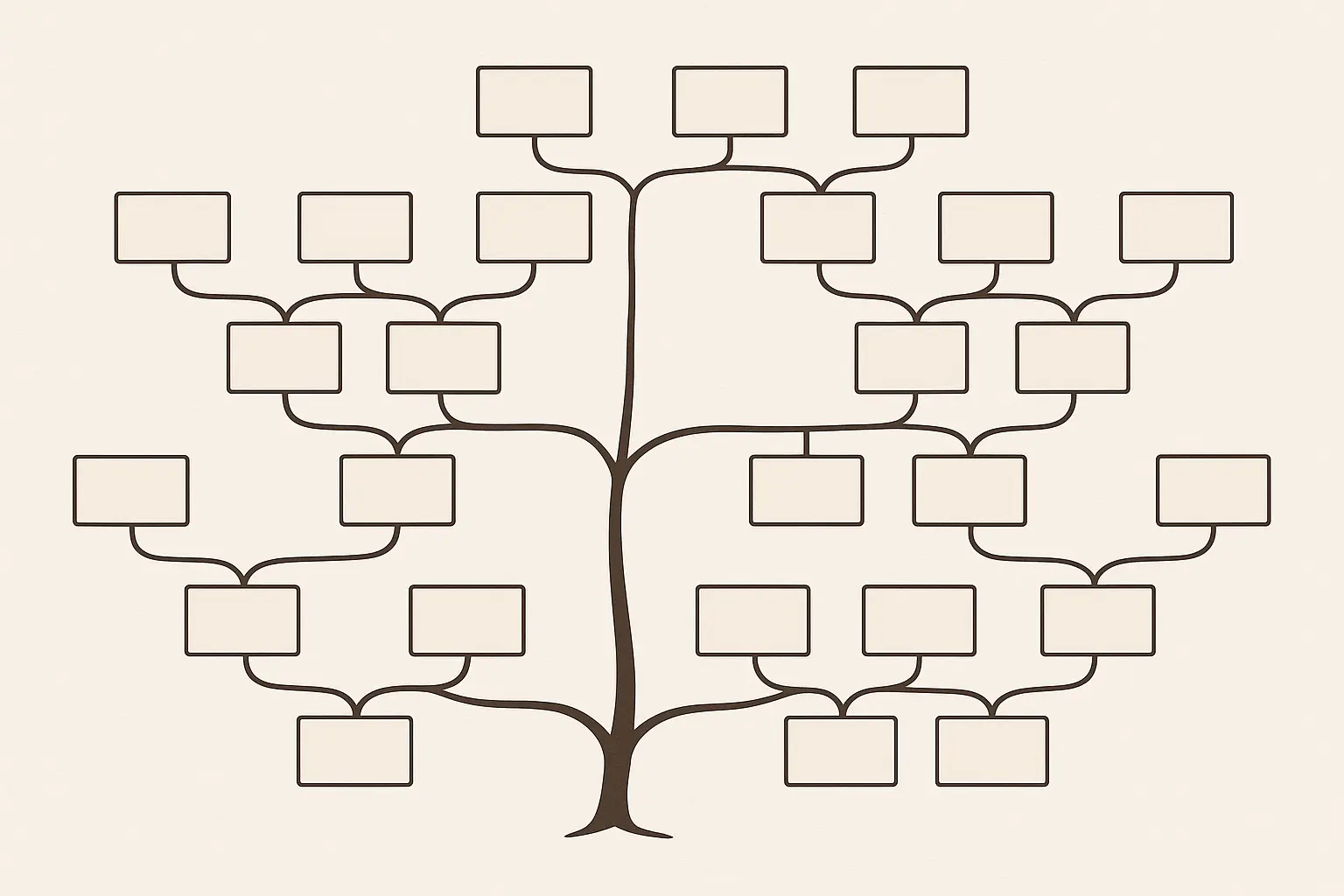When my cousin Jake died last year, I stared at a blank page for hours. How do you capture a lifetime of inside jokes, shared secrets, and family barbecue adventures in a five-minute speech? If you’re facing the same challenge, you’re not alone—and you’re probably overthinking it.
Quick Resource:
Craft a heartfelt, family-centered tribute with the Celebration of Life Generator.
According to research by the Grief Recovery Institute, 87% of people find writing about their feelings helpful in the grieving process, making the speech preparation process both therapeutic and essential for healing while honoring your cousin’s memory.

The truth is, you already have everything you need – the memories, the love, and the understanding of what made your cousin special. You don’t need to be Shakespeare. You just need to be honest about what they meant to you and your family.
TL;DR
- Cousin relationships are special because they blend family with friendship – that’s worth celebrating
- Start with the memories that make you smile before they make you cry
- Don’t overthink the balance between personal stories and family-friendly content – just be honest
- You’re going to get emotional, and that’s perfectly okay
- If you’re stuck, ask other family members for their favorite memories
- Your speech doesn’t need to be perfect; it just needs to come from your heart
Why Your Cousin Deserves This Tribute
Maybe you grew up three houses down from each other, or maybe you only met at weddings and funerals but still felt that instant connection. Maybe there’s a 15-year age gap, or maybe you’re twins born six months apart to different moms. None of that changes the fact that they mattered to you.
Cousin relationships occupy this weird, wonderful space in families. They’re not your siblings, so there’s less baggage. They’re not just friends, so there’s deeper history. They’re the people who made boring family dinners bearable and turned every holiday into an adventure.
When crafting these special tributes, understanding the fundamentals of family eulogies provides essential guidance for honoring these unique relationships effectively.
Capture your cousin’s unique personality and family role with the Celebration of Life Generator.
The Special Place Cousins Hold in Our Lives
Your cousin was probably the one who understood your family’s quirks without you having to explain them. They knew why Uncle Bob always tells that same fishing story, why Grandma insists on making enough food for an army, and why your mom gets that look when someone brings up politics at dinner.
These relationships often start during childhood through family gatherings, holiday celebrations, or summer visits. But unlike friendships that might fade, cousin bonds have this built-in permanence. You can go years without talking, then pick up right where you left off at the next family reunion.
I remember my cousin Jake always being the one to suggest we sneak out to the backyard during those endless adult conversations at family dinners. We’d build elaborate obstacle courses or create treasure hunts that kept us entertained for hours. Those moments weren’t just childhood fun – they were the foundation of a relationship that would support me through college stress, career changes, and major life decisions decades later.
Distance doesn’t determine closeness. Some cousins live next door and barely talk. Others live across the country but text every week. Focus on what your relationship actually was, not what it looked like on paper.
How These Bonds Evolve Over Time
The relationship you had with your cousin likely changed as you both grew up. Maybe you started as partners in crime during family reunions but evolved into each other’s closest confidants as adults. Perhaps your cousin became the person you called first with good news or the one who supported you through life’s biggest challenges.
Think about how your relationship shifted when you both became adults with your own responsibilities, careers, and families. Did your cousin become someone you turned to for advice? Were they the family member who truly understood your perspective because you shared similar experiences growing up in the same extended family system?
Consider Sarah, who lived three states away from her cousin Michael but maintained a close bond through weekly phone calls and annual summer visits. Despite the distance, Michael became her confidant during her divorce, offering support that her local friends couldn’t provide because he understood her family background and values. Their relationship exemplifies how geographic distance doesn’t diminish the depth of cousin connections.

Finding Your Stories
Start with the stories that make you smile before they make you cry. What’s the first thing that pops into your head when someone says your cousin’s name? That ridiculous Halloween costume? The way they always stole your fries? The phone call at 2 AM when you both couldn’t sleep? Those are your real memories—not the “important” ones you think you should include.
Recent celebrations of life, such as hundreds of Montanans honoring John Ostlund at his celebration of life service (KTVQ), demonstrate how meaningful tributes bring communities together to celebrate someone’s impact on family and friends.
Mining Your Childhood Adventures Together
Think back to your earliest memories with your cousin. What adventures did you share? Maybe you built elaborate forts during summer visits to grandparents’ houses, or perhaps you were partners in crime during family gatherings, sneaking extra desserts or creating elaborate games to entertain yourselves during long adult conversations.
Family vacations often created some of the most memorable cousin experiences. Did you share hotel rooms, explore new places together, or create inside jokes that lasted for years? These travel memories often reveal your cousin’s sense of adventure, curiosity, or ability to make any situation fun.
Holiday traditions frequently feature cousins prominently. Maybe your cousin was the one who organized talent shows, led scavenger hunts, or convinced everyone to participate in elaborate games. These memories show how your cousin contributed to family joy and tradition.

Don’t overlook the quieter moments either. Sometimes the most meaningful memories aren’t the big adventures but the small conversations, shared secrets, or times when your cousin simply understood you in ways others didn’t. These intimate moments often reveal character traits that made your relationship special.
Recognizing Their Adult Friendship and Support
As adults, your cousin might have become one of your closest friends and confidants. They were probably there for major life events – weddings, births, career changes, or personal challenges. These experiences show how your relationship evolved beyond childhood playmates to genuine adult friendship.
Professional support between cousins is common and worth highlighting. Maybe your cousin helped you navigate career decisions, provided business advice, or supported your entrepreneurial ventures. Perhaps they were your first investor, your biggest cheerleader, or your most honest critic when you needed reality checks.
Jennifer’s cousin David exemplified adult cousin support when he drove eight hours to help her move after her job transfer, despite having his own busy schedule. He spent the weekend moving boxes, helping her research neighborhoods, and connecting her with local professionals. This practical support, combined with his emotional encouragement during a stressful transition, showed how their childhood bond had evolved into reliable adult friendship.
Capturing Their Personality
Every cousin has signature traits that family members remember fondly. Was your cousin the family comedian, always ready with jokes or funny stories that lightened the mood at gatherings? Did they have infectious laughter that could turn any situation into a celebration?
Some cousins are natural leaders within family dynamics. They organize reunions, coordinate group gifts, mediate family conflicts, or inspire younger relatives through their example. If your cousin played this role, you have rich material about their leadership and influence.
Special talents and interests often define how cousins are remembered. Whether they were artistic, athletic, musical, or had unique hobbies, these abilities contributed to their identity and provided entertainment or inspiration for family members.
Acts of generosity and kindness frequently characterize beloved cousins. They might have been the ones who remembered everyone’s birthdays, helped family members through tough times, or simply made themselves available whenever someone needed support.
Drawing inspiration from proven celebration of life speech examples can help structure your tribute while ensuring it captures your cousin’s unique personality and family impact.
Structure your stories and memories effortlessly with help from the Celebration of Life Generator.

Honoring Your Relationship
Here’s the thing about balancing personal stories with family-friendly content: tell the stories that show who they really were. If Aunt Martha gets a little uncomfortable hearing about the time you and your cousin snuck out, that’s her problem. This isn’t about making everyone comfortable—it’s about being honest.
When looking for examples of funeral speeches, remember that cousin tributes have unique considerations that differ from immediate family eulogies.
Creating Your Opening
Your opening sets the tone for everything that follows, so choose something that immediately captures your cousin’s essence. Maybe they had a favorite saying, a characteristic greeting, or a particular way of approaching life that everyone in the family recognized.
Mark opened his cousin Lisa’s celebration of life speech with: “Lisa always said, ‘Life’s too short for boring conversations,’ and she lived by those words every single day. Whether she was turning a simple grocery store trip into an adventure or transforming our quiet family dinners into lively debates about everything from politics to pizza toppings, Lisa had this incredible gift for making ordinary moments extraordinary.”
Briefly explain how you knew each other and why you’re the one delivering this tribute. This context makes your subsequent stories more meaningful and helps everyone else who loved them too understand your perspective.
Figuring Out What to Say in the Middle
Your middle section should include your most meaningful stories and observations. Choose examples that show your cousin’s character while demonstrating their impact on family relationships and individual lives.
Mix up your story types to keep people engaged. Include some funny moments, touching experiences, and examples of your cousin’s positive influence on others. This variety paints a complete picture of your cousin’s personality without getting boring.
Don’t worry about fancy transitions between stories. Simple connecting phrases work fine: “Speaking of adventures…” or “That reminds me of the time…” Your audience is there because they loved your cousin too – they’ll follow along.
Remember that your audience includes people with different relationships to your cousin. While your personal stories provide intimacy and authenticity, including broader examples helps everyone feel connected to your tribute.
Understanding Cultural and Family Expectations
Different cultural backgrounds and family traditions significantly influence how cousin relationships are viewed and should be honored. Many Latino families consider cousins as hermanos or hermanas (brothers and sisters), with close bonds expected and celebrated throughout life. Traditional Asian cultures often emphasize respect for elder cousins and collective family responsibility. Mediterranean cultures typically maintain strong extended family connections, with cousins playing important roles in family celebrations and support systems.
Creating a funeral speech for family member requires sensitivity to these cultural considerations while maintaining personal authenticity.
Build a culturally sensitive and deeply personal tribute through the Celebration of Life Generator.
Some families treat cousin relationships more formally, with less frequent interaction but deep respect for family hierarchy and traditions. Others encourage cousin bonds that rival sibling relationships in closeness and mutual support.
Religious perspectives also matter. Christian denominations often emphasize the importance of family bonds and eternal reunion, providing comfort and hope for grieving cousin relationships. Jewish culture places strong emphasis on family connections and remembrance traditions. Islamic traditions regarding family respect and remembrance provide frameworks for honoring deceased cousins while maintaining cultural sensitivity.
Ending With Heart
Your conclusion should provide closure while offering hope and comfort to grieving family members. Focus on how your cousin’s memory will continue to influence family gatherings, relationships, and traditions rather than dwelling on the loss itself.
Talk about how you plan to honor your cousin’s memory. Maybe you’ll continue a tradition they started, support a cause they cared about, or maintain connections they helped foster within the family. These forward-looking statements help provide continuity and hope during a difficult time.
Don’t try to wrap everything up in a neat bow. Grief is messy, and that’s okay. Your conclusion doesn’t need to make everyone feel better – it just needs to acknowledge that your cousin mattered and will be missed.

Getting Through the Speech Without Falling Apart
You’re going to cry. That’s not a failure—that’s proof you loved them. Bring tissues, bring water, and bring a backup person who can finish reading if you need to step away. Nobody expects you to be a professional speaker. They expect you to be human.
Recent memorial services, such as Erika Kirk’s emotional speech at her husband’s memorial service (LiveNOW Fox), show how powerful personal tributes can provide comfort to grieving families while inspiring others through shared memories and values.
Understanding the broader context of celebration of life ceremonies helps ensure your cousin tribute fits appropriately within the overall memorial service structure.
Align your words perfectly with the tone of the service using the Celebration of Life Generator.
Getting Ready to Speak
Practice your speech multiple times before the actual delivery, but don’t memorize it word for word. Reading it aloud helps you identify sections that might trigger strong emotions and allows you to develop strategies for managing those moments. Practice also builds confidence and familiarity with your content.
Research by the American Psychological Association shows that 85% of people find public speaking anxiety-inducing, but preparation can significantly reduce this stress. Practice emotional sections of your speech to build resilience and familiarity with challenging content.
Have another family member prepared to step in or assist if needed. This isn’t admitting defeat – it’s being practical. Your tribute will be completed even if you need a moment to compose yourself.
Don’t rush through difficult sections. Taking a moment to breathe and collect yourself shows authenticity and helps your audience connect with your emotions. Water nearby and tissues readily available aren’t signs of weakness – they’re practical tools that help you deliver your message effectively.
Connecting with Everyone Else Who Loved Them Too
Your audience likely includes multiple generations with different relationships to your cousin. Grandparents, parents, siblings, other cousins, and friends all have unique perspectives and memories. Don’t try to speak for everyone – just speak honestly about your own experience.
Use language and references that most people will understand. While inside jokes and family-specific references add authenticity, make sure you explain context for audience members who might not understand particular references or family dynamics.
Make eye contact with different sections of your audience to help everyone feel included in your tribute. Don’t focus exclusively on immediate family members – extended relatives and friends also need to feel acknowledged and included in the celebration.
Acknowledge that different family members have different memories and relationships with your cousin. This recognition helps create inclusive celebrations that honor various perspectives rather than focusing solely on your individual relationship.

When You Need Extra Help
If you’re completely stuck, ask other family members to share their favorite memories. Sometimes hearing someone else’s story will unlock yours. And if writing isn’t your thing, that’s okay too—speak from notes, not a script.
For those seeking structured guidance, exploring cousin eulogy templates can provide helpful frameworks while maintaining the personal touch essential for meaningful family tributes.
When Grief Makes Everything Harder
Grief affects everyone differently, and there’s no shame in seeking help when you’re struggling to put your thoughts into words. The overwhelming nature of loss can make it difficult to organize memories, choose appropriate stories, or even know where to begin with your tribute.
The Eulogy Generator offers specialized support for crafting celebration of life speeches that honor the unique bonds between cousins. Their interactive platform helps you articulate the specific dynamics that made your cousin relationship special – from childhood adventures to adult friendship evolution.
Get gentle, guided support for your cousin’s tribute with the Celebration of Life Generator.
Rather than providing generic templates, professional tools help you capture your cousin’s authentic personality, family role, and individual impact. The personalized approach ensures your tribute reflects the genuine relationship you shared while honoring their memory appropriately.
Professional guidance helps you navigate the complex balance between personal memories and broader family impact. Experienced services understand how to weave together intimate stories with examples that resonate with extended family members, creating tributes that honor multiple perspectives.
Those looking for additional inspiration can benefit from reviewing funeral speech examples that demonstrate effective techniques for honoring family members while maintaining emotional authenticity.
Quick Checklist:
- Gather childhood memories and shared adventures
- Collect stories from other family members
- Identify your cousin’s key personality traits
- Choose 2-3 central themes or stories
- Write opening that captures their essence
- Develop middle section with varied story types
- Practice speech aloud multiple times
- Prepare backup support person
- Review cultural and religious considerations

Final Thoughts
Your cousin didn’t love you because you were perfect. They loved you because you were you—messy, imperfect, real you. Your speech doesn’t need to be a masterpiece. It just needs to come from the same place their love did: your heart.
These unique family bonds deserve thoughtful recognition that captures both the individual connection you shared and the role your cousin played in bringing family members together. Whether your bond developed through childhood adventures, evolved into adult friendship, or maintained connection across geographic distances, these relationships deserve authentic, heartfelt tributes.
The memories you choose to share – from family gathering moments to personal milestones – should reflect your cousin’s true personality while acknowledging their influence on multiple family members. Remember that cousin relationships often blend the comfort of family with the choice of friendship, making them particularly precious when we lose someone who occupied this special place in our lives.
Don’t hesitate to seek help when grief makes the writing process overwhelming, and remember that practice and emotional preparation help ensure your tribute honors your cousin effectively while providing comfort to other grieving family members.
For comprehensive guidance on creating meaningful tributes for all types of family relationships, exploring the complete eulogy guide provides valuable insights that complement cousin-specific considerations.
Your cousin chose to love you, and you chose to love them back. That’s not complicated—it’s beautiful. Your speech doesn’t need to be perfect; it just needs to be true. Trust that the people listening loved them too, and they’ll understand exactly what you mean when you talk about that time at Grandma’s house when you both got in trouble for tracking mud through the kitchen.
Begin writing your authentic family tribute today with the Celebration of Life Generator.


